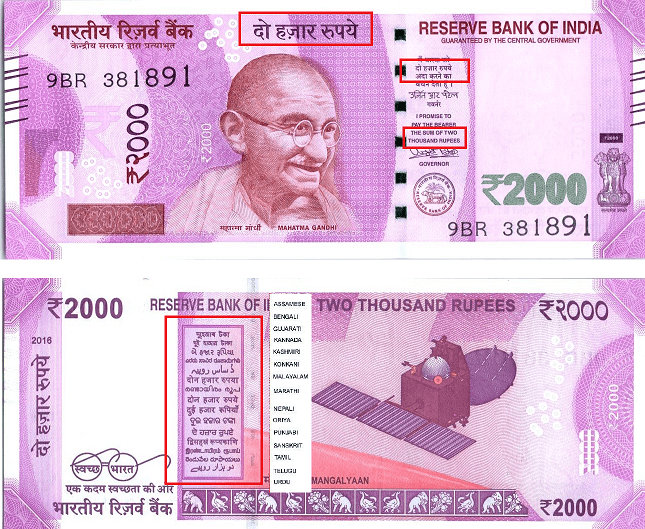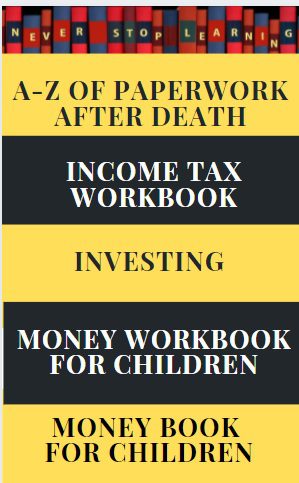Is Hindi the national language of India? The fight over supremacy of language in India started before independence and is still continuing. Why does India not have a National Language? What are the official languages of India? What are the languages on the bank notes?
Table of Contents
The National Language of India
The most spoken languages in India, according to India’s census data, are Hindi (422m), Bengali (83m), Telugu (75m), Marathi (71m), Tamil (60m), Urdu (51m), Gujarati (46m), and Punjabi (29m).
There is no national language as declared by the Constitution of India. The Constitution of India designates the official language of the Government of India as Hindi and English.
Hindi is used for official purposes such as parliamentary proceedings, judiciary, communications between the Central Government and a State Government.
States within India have the liberty and powers to specify their own official language(s) through legislation and therefore there are 22 officially recognized languages in India of which Hindi is the most used.
The official site of details about language are available at http://www.rajbhasha.nic.in/en/ol_clause
Choosing National Language in India after Independence
After independence, constitution makers had a problem of selecting a national language which can unite a country because there were more than 1600 languages spoken in different parts of the country. At that time Hindi was an option as Hindi was being spoken by 40% of Indians at that time.
But what about non-Hindi speaking states and other documents and books which were inherited by Britishers which were written in English during British Raj. So at that time, it was decided that along with Hindi, English will also be an official language. But English will be the official language only for the next 15 years i.e. till 1965. (Article 343)
Protest to end Use of English
In late 1964, an attempt was made to expressly provide for an end to the use of English, but it was met with protests from states such as Maharashtra, Tamil Nadu, Punjab, West Bengal, Karnataka, Puducherry and Andhra Pradesh. Some of these protests also turned violent.
As a result, the proposal was dropped and the Act itself was amended in 1967 to provide that the use of English would not be ended until a resolution to that effect was passed by the legislature of every state that had not adopted Hindi as its official language, and by each house of the Indian Parliament. So government at that time said that states can choose Hindi, English or the language spoken in their states for all official purposes.
The image below shows the states and the languages spoken

Languages in India
22 Official Languages of India
So now there are 22 languages as official language of India and no National Language.
- According to Article 348(1) of the Indian Constitution: “Language to be used Supreme Court, High Court, Bills, Acts, Amendments, orders, rules, sub-laws passed by Parliament or State legislature shall be in the English language.”
- Article 351 of the Indian Constitution states that: “It shall be the duty of the Union to promote the spread of the Hindi language, to develop it so that it may serve as a medium of expression for all the elements of the composite culture of India and to secure its enrichment.”
It means that at the national level government will give importance to Hindi, while at the state level government has the freedom to choose one or more state languages.
For all the official documentation of rules, laws, decrees and order passed by the government and Supreme court and High courts must be in the English language with translation in Hindi or state language (optional).
22 official languages have been mentioned in the 8th schedule of the Indian Constitution are as follows
- 1. Assamese.
- 2. Bengali.
- 3. Bodo.
- 4. Dogri.
- 5. Gujarati.
- 6. Hindi.
- 7. Kannada.
- 8. Kashmiri.
- 9. Konkani.
- 10. Maithili.
- 11. Malayalam.
- 12. Manipuri.
- 13. Marathi.
- 14. Nepali.
- 15. Odia
- 16. Punjabi.
- 17. Sanskrit.
- 18. Santhali.
- 19. Sindhi.
- 20. Tamil.
- 21. Telugu.
- 22. Urdu
Languages on the Indian Note
India banknote has the amount written in 17 languages.
- On the obverse or front, the denomination is written in English and Hindi.
- On the reverse is a language panel which displays the denomination of the note in 15 of the 22 official languages of India.

Languages on Indian Bank Note
The missing six languages are
- Bodo
- Dogri
- Maithili
- Manipuri (Meitei)
- Santhali
- Sindhi
Importance of English in India
We, as a society are so obsessed with English, we look down upon those who cannot speak English as well as others. Many Indian parents have tried to remedy the problem of lack of opportunity in their generation by sending their children to English-medium schools.
We live in a country where resumes are rejected if you can’t speak English fluently over your qualification and expertise. This obsession has created the feeling that only speaking English is your passport to leading a prosperous lifestyle.
Free Online Game for Children on Languages on Indian Notes
India banknote has the amount written in 17 languages. On the obverse or front, the value of Note is written in English and Hindi. On the reverse of Note is a language panel which shows the denomination of the note in 15 of the 22 official languages of India. Let’s try to see if you can identify the name of language on the reverse of 2000 Rs note. In the Game below drag the name of the language to its correct position on the Note.
Video Is Hindi Our National Language?
This 3 minute video explains the struggle to come up with the national language of India.
This 3 minute video explains the languages used in communication in Central Govt, between the Central Govt and State Govt, the regions of the country, Region A, Region B and Region C.
Video: Big Fight over Hindi
This Big Fight Over Hindi tries to find answers to questions such as Should Hindi be the only national language or should English be the language for all official purposes? Is it wrong to forcibly impose Hindi over the rest of the country? And the most important question of all – are we neglecting our mother tongue vis-a-vis English?
Free Online Games to Teach Children about Money
Learning Engaging them through fun games can be a good way to get your child interested in money concepts. Teaching younger children needs to be fun and you as a parent need to ensure the money concepts are simple and not verbose in nature.
Nurture your child’s curiosity with immersive activities that make learning about Money an adventure!
Play games to understand our currency, Indian Rupee Notes, Banking, Credit Card, Spending, Needs and Wants. Know about the Games here.
Related Articles:
- Bemoneyaware’s Book on teaching Money to Children
- Money Games for Children
- What are you teaching your kids about money?
- Kids and Money Conversations
- Needs and Wants, Why parents say Money doesn’t grow on Trees
- How not to raise children who are Bored, woke and high maintenance? Teach About Money
How were you taught about money? How have you taught your Children about Money? What books/resources did you use?




